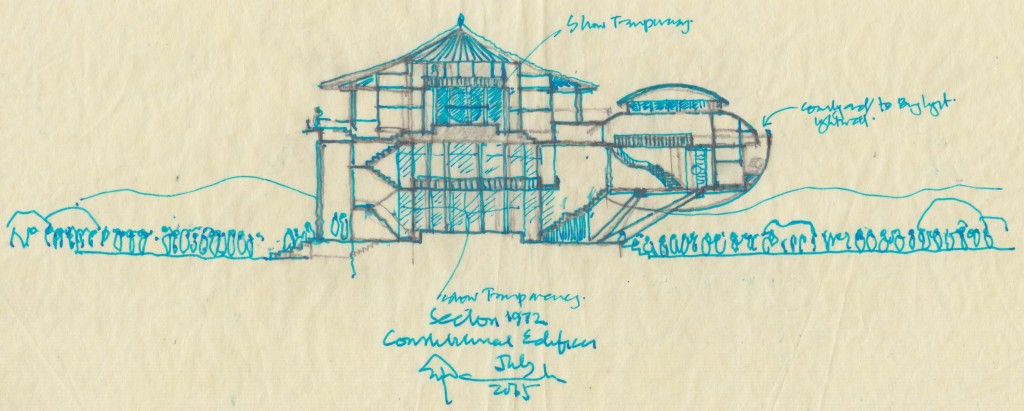“Hope to achieve political settlement through adoption of a new constitution. Don’t judge us by broken promises of past” says Foreign Minister Mangala Samaraweera at UNHRC in Geneva, on 14th September 2015.
The statement in September by Sri Lanka’s Foreign Minister provided a timely frame of reference to appreciate the ‘Corridors of Power’ exhibition. From the security guards at the venue of the exhibition to international constitution building process experts who gathered in Sri Lanka at the time around a workshop on constitutional reform, from students to academics and activists, ‘Corridors of Power’ even before officially opening to the public generated more interest than any project curated by Groundviews and the Centre for Policy Alternatives previously.
Led by the input of Asanga Welikala, in collaboration with Channa Daswatta, ‘Corridors of Power’ through architectural drawings and models, interrogated Sri Lanka’s constitutional evolution since 1972.
The exhibition depicted Sri Lanka’s tryst with constitutional reform and essentially the tension between centre and periphery. The output on display included large format drawings, 3D flyovers, sketches, and models reflecting the power dynamics enshrined in the the 1972 and 1978 constitutions, as well as the 13th, 18th and 19th Amendments.
To our knowledge, nothing along these lines was ever attempted or created before. In addition to the exhibits on display, each day featured a keynote presentation or panel discussion by eminent individuals, around the topic of constitutional reform in general. All the submissions, including the Q&A session, were recorded and are now available online.
Access them as a playlist here, or download each podcast / recording from here.
- Facebook event page
- Lineup of keynote speakers, including those from Government, respondents and panellists
- Note by Curator (Sanjana Hattotuwa)
~
21st September, Drawing power: Framing the inconvenient, imagining the impossible (Panel)
Framing violence, and drawing an audience’s attention to it, can be powerfully achieved through the arts. In this reading, art inhabits a space under constant risk of expiration or asphyxiation – licenses can be revoked, scripts can be censored, art can be banned and artists can be silenced. On the other hand, art is also resistance – a space for contestation. If the pervasive architecture of authoritarianism is invisible to most, and society’s capture is through the power of deceit, art serves to decry, dissent and deconstruct. The most critical art risks pushback, whereas art that offers the illusion of critique often flourishes the most. As panellist Gehan Gunatilleke avers in his review of a very popular English play during the Rajapaksa regime, art can by design or inadvertently help strengthen the status quo: “Pusswedilla is damaging our political culture… Instead of compelling audiences to question the absurdity of their reality, Pusswedilla encourages them to accept the current political dispensation as the best on offer. This is dangerous because there can be no change without discomfort. Pusswedilla is… cleverly packaged propaganda.” How can art frame the violent without giving rise to more violence? How can, in a context of hopelessness, art contribute to a triumph of optimism in the capacity for change, over bitter experience? In critiquing loci of power, do artists lose their agency or independence by accepting funding from various interest groups, who hold and seek to expand their own power? Or is the choice contextual? How does one cultivate the imagination within repressive terrains, and frame the necessary, even when violence reigns? How can critical art’s power be strengthened, its appeal expanded, its production strengthened?
